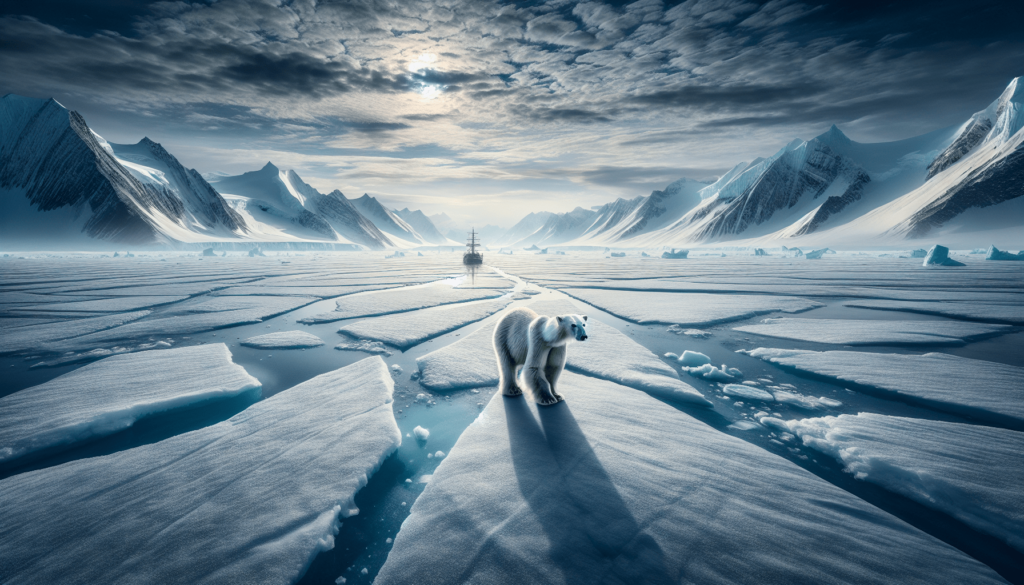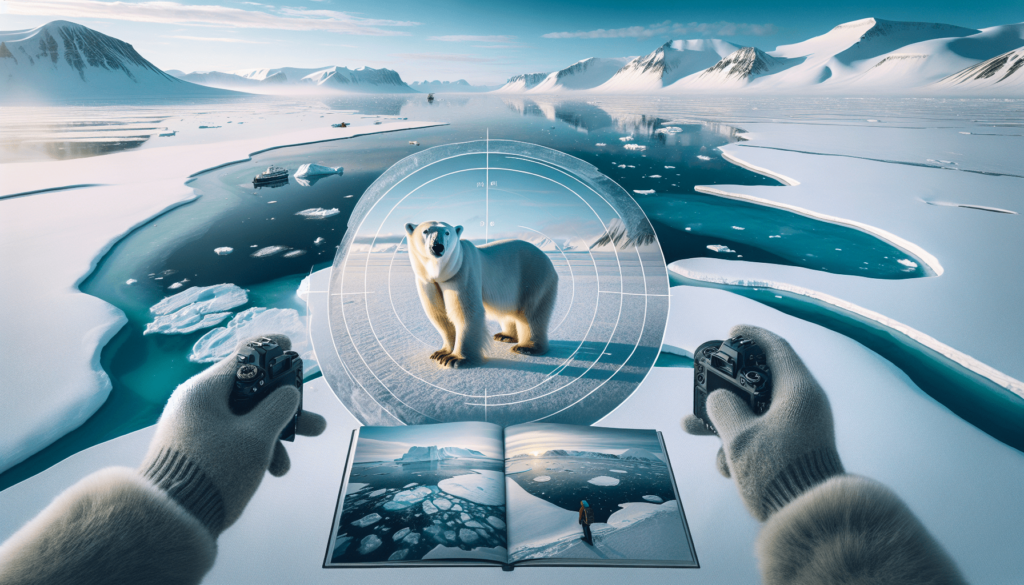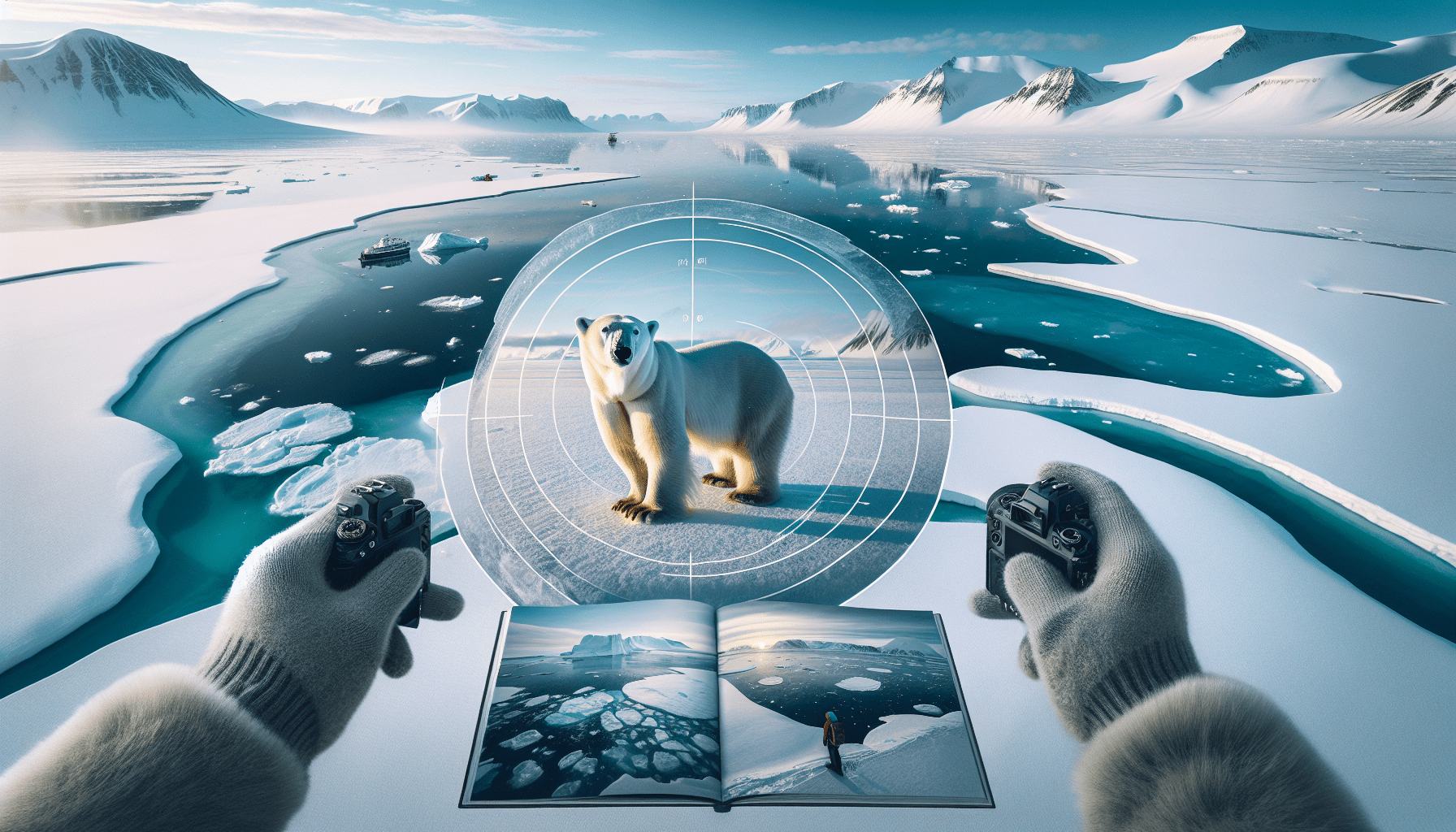Imagine embarking on adventure travel exploring the Arctic Circle, a thrilling journey of a lifetime, venturing into the mesmerizing realm of the frozen arctic. Picture yourself amidst the pristine wilderness, surrounded by snow-capped mountains, glaciers, and an icy ocean that stretches as far as the eye can see.
This awe-inspiring expedition promises to immerse you in a world of exhilarating experiences and fascinating encounters with Arctic wildlife. From witnessing the breathtaking beauty of the Northern Lights dancing across the night sky to traversing frozen landscapes on dogsleds, this article uncovers the wonders that await in the Arctic Circle. Get ready to embark on an adventure like no other, where you can truly explore the untamed spirit of nature and create memories that will last a lifetime.
The Arctic Circle
Location and Geography
The Arctic Circle is an imaginary line that runs parallel to the latitude 66°33′46.3″N. It encircles the Arctic region, which includes parts of eight countries: Canada, Russia, Greenland, the United States, Norway, Sweden, Finland, and Iceland. The Arctic Circle is known for its stunning landscapes and diverse ecosystems, making it a fascinating destination for adventurous travelers like you.
Geographically, the Arctic Circle is characterized by its icy landscapes, snowy peaks, and frozen bodies of water. It is home to the Arctic Ocean, the northernmost body of water on Earth, as well as vast glaciers and ice caps. The region also boasts incredible geological formations, including fjords and icebergs.
Climate and Weather
The climate in the Arctic Circle is cold, with long, harsh winters and relatively short, cool summers. Average temperatures can range from below freezing to just a few degrees above freezing, even during the summer months. The extreme cold temperatures in winter often drop to minus 30°C (-22°F) or lower.
The Arctic Circle experiences a unique climate phenomenon known as the midnight sun. During summer, the sun remains above the horizon for several weeks, leading to 24-hour daylight. Conversely, in winter, the region experiences the polar night, where the sun does not rise above the horizon for weeks or even months.
Flora and Fauna
Despite the harsh conditions, the Arctic Circle is teeming with a surprising variety of plant and animal life. The tundra vegetation, characterized by low-growing mosses, lichens, and hardy shrubs, adapts to survive the extreme cold and permafrost.
In terms of wildlife, the Arctic Circle is home to iconic creatures such as polar bears, Arctic foxes, seals, and walruses. These majestic animals have adapted to the Arctic environment and are perfectly suited to its icy conditions. The region also serves as a vital breeding ground for numerous bird species, including puffins, terns, and geese.
Popular Adventure Activities
Dog Sledding
Dog sledding is a thrilling adventure activity that allows you to experience the Arctic wilderness in a unique way. You’ll be able to witness the incredible strength and teamwork of sled dogs as they pull you through the snowy landscapes. Professional mushers will guide you through the wilderness, teaching you the skills needed to navigate the frozen terrain.
Snowmobiling
Snowmobiling is another popular activity that provides an exhilarating way to explore the Arctic Circle. You’ll zoom across frozen lakes and through pristine snow-covered forests, experiencing the thrill of high speeds and breathtaking scenery. Whether you’re a beginner or an experienced rider, snowmobiling offers an exciting adventure for everyone.
Ice Fishing
Ice fishing is a traditional activity that allows you to experience the Arctic Circle’s unique angling opportunities. You’ll drill a hole in the frozen lake and drop your line, waiting for a fish to bite. This serene activity offers a chance to connect with nature while enjoying the solitude and tranquility of the Arctic landscape.

Northern Lights Experience
What are Northern Lights?
The Northern Lights, also known as the Aurora Borealis, are a natural phenomenon that occurs in the polar regions, including the Arctic Circle. It is a dazzling display of lights in the sky, with vibrant colors dancing across the darkness. The lights are caused by charged particles from the sun colliding with Earth’s atmosphere, resulting in stunning displays of green, pink, purple, and blue lights.
Best Time and Places to See them
To increase your chances of witnessing the Northern Lights, it is best to visit the Arctic Circle during the winter months between October and March. During this time, the long nights and clear skies provide optimal viewing conditions. Some of the best places to see the Northern Lights include Tromsø in Norway, Fairbanks in Alaska, and Kiruna in Sweden.
Tips for Photographing the Northern Lights
Capturing the beauty of the Northern Lights can be challenging but incredibly rewarding. Here are some tips to help you capture stunning photographs:
- Use a tripod to keep your camera steady and avoid blurry shots.
- Set your camera’s ISO to a high value to capture as much light as possible.
- Use a wide-angle lens to capture a larger portion of the sky.
- Experiment with different exposure times and aperture settings to find the right balance.
Remember, patience is key when photographing the Northern Lights. Be prepared to spend several hours outside, waiting for the perfect moment to capture this breathtaking natural phenomenon.
Wildlife Encounters
Polar Bears
Polar bears are the iconic symbol of the Arctic, and encountering one in its natural habitat is a truly unforgettable experience. These majestic creatures are the largest land carnivores on Earth and are perfectly adapted to the Arctic environment. While polar bears are primarily found in the northern regions of Greenland and Canada, there are also opportunities to spot them in other parts of the Arctic Circle.
Arctic Foxes
Arctic foxes are known for their stunning white fur, which helps them blend into the snowy landscapes of the Arctic Circle. These small, nimble creatures are incredibly adaptive and can survive in extremely cold temperatures. Arctic foxes can be found throughout the Arctic region, including parts of Canada, Greenland, and Russia.
Seals and Walrus
Seals and walrus are common marine mammals found in the Arctic Circle. These fascinating creatures can be spotted resting on ice floes or swimming in the icy waters. Observing them in their natural habitat provides a unique opportunity to witness their graceful movements and learn more about their behavior and life in the Arctic.

Svalbard Archipelago
Island Overview
The Svalbard Archipelago is a group of islands located in the Arctic Ocean, halfway between mainland Norway and the North Pole. It is known for its stunning landscapes, including glaciers, mountains, and fjords. The archipelago is also home to a diverse range of wildlife, making it a popular destination for nature enthusiasts.
Exploring Longyearbyen
Longyearbyen is the largest settlement in the Svalbard Archipelago and serves as the entry point for most visitors. Despite its remote location, the town offers modern amenities, including hotels, restaurants, and tourist facilities. Exploring Longyearbyen provides opportunities to learn about the history and culture of the archipelago while enjoying stunning views of the surrounding mountains and fjords.
Wildlife Viewing Opportunities
The Svalbard Archipelago offers unparalleled wildlife viewing opportunities. Visitors have the chance to spot a wide range of Arctic animals, including polar bears, Arctic foxes, reindeer, and various bird species. Wildlife safaris and guided tours allow you to explore the archipelago’s diverse ecosystems while respecting the animals’ natural habitats.
Cruise Expeditions
Arctic Cruises
Arctic cruises offer a unique way to explore the Arctic Circle’s remote and breathtaking landscapes. These expeditions typically take place aboard specially designed ice-strengthened ships, allowing you to navigate through icy waters and reach destinations that are otherwise inaccessible.
Highlights of Arctic Cruises
Arctic cruises offer a multitude of highlights, including close encounters with polar wildlife, visits to remote Inuit communities, and breathtaking views of glaciers and icebergs. In addition, many cruises provide opportunities to engage in activities such as kayaking, hiking, and even camping on the ice. Expert guides and naturalists on board provide insightful commentary and ensure a safe and enjoyable experience.
Choosing the Right Cruise
When choosing an Arctic cruise, it is important to consider factors such as the itinerary, vessel size, and onboard amenities. Some cruises specialize in specific activities or destinations, while others offer a more comprehensive Arctic experience. Research and compare different options to find the cruise that best suits your interests and preferences.
Remote Iceberg Exploration
Iceberg Formation and Types
Icebergs are formed when chunks of ice break off from glaciers or ice shelves and float freely in the ocean. The Arctic Circle is well-known for its stunning icebergs, which come in various shapes and sizes. Depending on their formation and composition, icebergs can showcase mesmerizing blue hues, sculptural forms, and intricate textures.
Kayaking and Zodiac Excursions
Kayaking and Zodiac excursions offer an up-close and personal experience with the Arctic’s remote icebergs. Paddling through icy waters or cruising aboard a small inflatable boat allows you to navigate through narrow channels, explore hidden coves, and appreciate the intricate details of the ice formations. These excursions provide a unique perspective and deeper appreciation for the Arctic’s natural wonders.
Safety Considerations
When exploring remote icebergs, it is essential to prioritize safety. Always follow the instructions and guidance of experienced guides and instructors. Dress warmly and wear appropriate gear, including a life jacket. Be mindful of changing weather conditions and adhere to safety protocols to ensure a safe and enjoyable experience.
Ecotourism and Sustainability
Preserving the Arctic Environment
Ecotourism plays a vital role in preserving the fragile Arctic environment. It is crucial for travelers to minimize their impact on the delicate ecosystems of the Arctic Circle. This can be achieved by practicing Leave No Trace principles, respecting wildlife and their habitats, and following designated trails and areas. By being responsible and conscientious travelers, we can help protect the Arctic for future generations.
Supporting Indigenous Communities
The Arctic region is home to indigenous communities that have lived in harmony with the land for thousands of years. When visiting the Arctic Circle, it is essential to support these communities by engaging in locally owned and operated businesses, purchasing traditional handicrafts, and respecting their customs and traditions. By doing so, travelers can contribute to the preservation of indigenous cultures and support sustainable development within these communities.
Responsible Travel Tips
To ensure a responsible and sustainable visit to the Arctic Circle, consider the following travel tips:
- Pack reusable water bottles and avoid single-use plastics.
- Limit energy consumption by turning off lights and conserving water.
- Follow designated trails and stay on established paths to avoid damaging fragile vegetation.
- Respect wildlife by observing from a safe distance and refraining from feeding or disturbing them.
- Support local conservation efforts and engage in educational opportunities that promote environmental awareness.
By adopting these practices, you are actively contributing to the preservation of the Arctic environment and supporting sustainable tourism.
Arctic Wildlife Photography
Photographing Polar Bears
Photographing polar bears requires skill, patience, and respect for the animals and their habitat. To capture stunning images, consider the following tips:
- Use a telephoto lens to get close-up shots without disturbing the bears.
- Shoot during the golden hours of early morning or late evening for soft, warm lighting.
- Frame the polar bear in its natural environment to provide context and tell a story.
- Capture action shots to showcase the bears’ behavior and agility.
- Be mindful of ethical guidelines and regulations to ensure the welfare of the bears.
Capturing Bird Life
Birdlife in the Arctic Circle offers endless opportunities for stunning wildlife photography. To capture engaging images of Arctic bird species, consider these tips:
- Use a telephoto lens to capture the fine details of the birds’ plumage.
- Observe the birds’ behavior and anticipate their movements to capture dynamic shots.
- Experiment with different angles and compositions to create unique and visually pleasing images.
- Utilize a fast shutter speed to freeze the birds’ motion and capture sharp images.
- Capture the birds in their natural habitat to tell a story and showcase their connection to the Arctic ecosystem.
Tips for Wildlife Photography
When photographing wildlife in the Arctic Circle, it is important to prioritize safety and the well-being of the animals. Here are some general tips for wildlife photography:
- Stay a safe distance away from the animals to avoid causing distress or disturbing their natural behavior.
- Use a telephoto lens to capture close-up shots without encroaching on the animals’ personal space.
- Be patient and observant, allowing the animals to come to you and capturing their natural behavior.
- Research the animals’ habits and behaviors beforehand to anticipate their movements and get the best shots.
- Remember, the welfare of the animals should always come first. Never chase or harass wildlife for the sake of a photograph.
Arctic Survival Skills
Navigating in the Arctic
Navigating in the Arctic requires specialized skills and knowledge due to the extreme conditions and remote nature of the region. Key survival skills include:
- Understanding how to use a compass and map to navigate in the absence of landmarks.
- Learning to read and interpret the signs provided by the natural environment, such as snowdrift patterns and distant ridges.
- Familiarizing yourself with basic orienteering techniques and navigation tools.
- Understanding how to navigate safely across sea ice and frozen landscapes, including identifying unstable ice conditions.
Building Snow Shelters
Building snow shelters is a crucial skill for survival in the Arctic Circle. Properly constructed snow shelters can provide protection from the elements and help maintain body heat. Some common types of snow shelters include:
- Snow caves: Excavate a hollow space in a snowbank or drift to create an insulated shelter.
- Snow trenches: Dig a trench in the snow and cover it with a tarp or insulated material for added protection.
- Quinzhees: Construct a dome-shaped shelter by piling and compacting snow, then hollowing out the interior.
Learning these techniques and practicing building snow shelters in a safe environment will enhance your ability to survive and thrive in the Arctic.
Survival Gear and Equipment
When venturing into the Arctic Circle, it is essential to be prepared with the right gear and equipment. Some essential items to include in your survival kit are:
- Cold-weather clothing: Layered clothing, including thermal base layers, insulating mid-layers, and waterproof outerwear.
- Insulated footwear: Boots designed for extreme cold temperatures with good traction and insulation.
- Navigation tools: A compass, topographic maps, and a GPS device to aid in navigation.
- Emergency shelter: Lightweight and compact tents or bivvy bags for emergency situations.
- Food and water: High-calorie, non-perishable food, and a sufficient supply of drinking water.
Additionally, carrying essential safety items such as a first aid kit, fire starter, and communication devices is crucial for any Arctic adventure.
Adventure Travel Exploring The Arctic Circle
Adventure Travel Exploring the Arctic Circle offers a myriad of opportunities for unforgettable experiences. From thrilling adventure activities to witnessing the mesmerizing Northern Lights and encountering unique wildlife, the Arctic Circle is a destination that will leave you in awe.
By practicing responsible travel and being mindful of the Arctic’s delicate ecosystem, you can contribute to the preservation of this extraordinary region for future generations to enjoy. So pack your cold-weather gear, embark on an Arctic adventure, and create memories that will last a lifetime.
I hope you enjoyed reading this, and you can take away some snippets at least, and it it gives you an appetite for a new adventure. Why not check out ‘The Best Destinations For Whale Watching In The Arctic‘, something else you can try your hand at!

